| Season Start: | 03 September 1977 | | Season End: | 11 March 1978 | | Season Length: | 28 Weeks | | Actual Weeks: | 26 Weeks | | Writers: | Bob Baker, Chris Boucher, Dave Martin, David Agnew, Robert Holmes and Terrance Dicks | | Directors: | Derrick Goodwin, George Spenton-Foster, Gerald Blake, Norman Stewart, Paddy Russell and Pennant Roberts | | Producer: | Graham Williams | | Script Editors: | Anthony Read and Robert Holmes | | Visual Effects: | Colin Mapson, Ian Scoones, Peter Day, Peter Logan, Peter Pegrum, Richard Conway and Tony Harding | | Title Sequence: | Bernard Lodge | | Title Music: | Ron Grainer and the BBC Radiophonic Workshop. Arranged by Delia Derbyshire |
|
Incarnation of the Doctor: |
The Fourth Doctor
|
| Number of
Companions: |
2 |
| The
Companions: |
Leela (Departs) and K9 Mk I (Joins and Departs)
|
| Number of
Stories: |
6
|
| Number of
Incomplete/Missing Stories: |
0
|
| Number of
Episodes: |
26
|
| Number of
Incomplete/Missing Episodes: |
0
|
| Percentages: |
| Full Stories Held | 100% | | Episodes Held | 100% |
|
| Doctor Who Magazine Poll (1998) | | | Doctor Who Magazine Poll (2009) | | | Doctor Who Magazine Poll (2014) | |
|
 'The localised condition of planetary atmospheric condensation caused a malfunction in the visual orientation circuits. Or to put it another way, we got lost in the fog.' 'The localised condition of planetary atmospheric condensation caused a malfunction in the visual orientation circuits. Or to put it another way, we got lost in the fog.'
The Doctor
(Horror of Fang Rock) |
|
|
|
|
| |
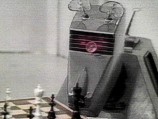 |
| K9 |
|
 Following on from the hugely successful Season Fourteen this season unfortunately became one of the least liked of the whole of the Fourth Doctor’s era. This is despite a number of important and memorable events in the show’s history taking place. Namely the introduction of K9, the departure of Leela and more details being revealed about the Time Lords. This season also included the third appearance of the Sontarans as well as the first, and only, appearance of their archenemy the Rutans. Following on from the hugely successful Season Fourteen this season unfortunately became one of the least liked of the whole of the Fourth Doctor’s era. This is despite a number of important and memorable events in the show’s history taking place. Namely the introduction of K9, the departure of Leela and more details being revealed about the Time Lords. This season also included the third appearance of the Sontarans as well as the first, and only, appearance of their archenemy the Rutans.
 This season started and ended with the highly regarded stories "Horror of Fang Rock" and "The Invasion of Time" respectively. But it was the four stories in between that let this season down. One of these stories, "Underworld", is considered by the majority of fans to be one of the least liked of the whole show. This season started and ended with the highly regarded stories "Horror of Fang Rock" and "The Invasion of Time" respectively. But it was the four stories in between that let this season down. One of these stories, "Underworld", is considered by the majority of fans to be one of the least liked of the whole show.
 With Producer Philip Hinchcliffe leaving Doctor Who to work on more hard-hitting dramas which, it was perceived, would make better use of his talents, Graham Williams was brought in to both replace Philip Hinchcliffe and to find a way to rework Doctor Who. At the same time Script Editor Robert Holmes had also been expressing a desire to leave so that he could return to writing full time. He had originally considered departing at the end of Season Fourteen, but new Producer Graham Williams had persuaded him to stay on for six extra months so enabling a transition period for his replacement Anthony Read. With Producer Philip Hinchcliffe leaving Doctor Who to work on more hard-hitting dramas which, it was perceived, would make better use of his talents, Graham Williams was brought in to both replace Philip Hinchcliffe and to find a way to rework Doctor Who. At the same time Script Editor Robert Holmes had also been expressing a desire to leave so that he could return to writing full time. He had originally considered departing at the end of Season Fourteen, but new Producer Graham Williams had persuaded him to stay on for six extra months so enabling a transition period for his replacement Anthony Read.
 Robert Holmes recommended Anthony Read, a longtime acquaintance of both himself and Graham Williams who had recently approached The Doctor Who production office about contributing to the show. Anthony Read was a former Producer and Script Editor on programmes such as The Troubleshooters, and had also written for Sutherland's Law and Z Cars. Anthony Read agreed to handle the final stories of this season, as well as the entirety of Season Sixteen. He therefore became the new Script Editor during "The Sun Makers" – even though he would not receive an on-screen credit for this role until the following story, "Underworld". Robert Holmes recommended Anthony Read, a longtime acquaintance of both himself and Graham Williams who had recently approached The Doctor Who production office about contributing to the show. Anthony Read was a former Producer and Script Editor on programmes such as The Troubleshooters, and had also written for Sutherland's Law and Z Cars. Anthony Read agreed to handle the final stories of this season, as well as the entirety of Season Sixteen. He therefore became the new Script Editor during "The Sun Makers" – even though he would not receive an on-screen credit for this role until the following story, "Underworld".
 Due from the attacks from Mary Whitehouse, during the previous season, Graham Williams was under direct orders to tone down on the horror and violence and to turn Doctor Who back into more of a family show than it had been during the Philip Hinchcliffe/Robert Holmes era. Season Fifteen therefore saw an attempt to lighten the feel of the show by replacing the horror and violence with the only element Graham Williams felt was remaining to him: humour. With the measures taken by Graham Williams, the attacks from Mary Whitehouse finally abated, and such criticisms would not plague Doctor Who again in any serious form until 1985. Due from the attacks from Mary Whitehouse, during the previous season, Graham Williams was under direct orders to tone down on the horror and violence and to turn Doctor Who back into more of a family show than it had been during the Philip Hinchcliffe/Robert Holmes era. Season Fifteen therefore saw an attempt to lighten the feel of the show by replacing the horror and violence with the only element Graham Williams felt was remaining to him: humour. With the measures taken by Graham Williams, the attacks from Mary Whitehouse finally abated, and such criticisms would not plague Doctor Who again in any serious form until 1985.
 This season though is mainly remembered for the departure of Louise Jameson as companion Leela which occurred at the end of the final story, "The Invasion of Time". Louise Jameson had been invited to continue her role but despite Louise Jameson’s assurances that she was not interested in returning for Season Sixteen, Graham Williams remained optimistic that she would change her mind – hence the rather contrived exit in which, without any prior hints, Leela it seems falls in love with Chancellery Guard Andred and so elects to leave the TARDIS. Louise Jameson, reportedly wished for Leela to be killed off at the end of this season and it has been reported that she was disappointed that Leela instead opted to stay behind on Gallifrey with Andred. This is the main thing that lets this story down. This season though is mainly remembered for the departure of Louise Jameson as companion Leela which occurred at the end of the final story, "The Invasion of Time". Louise Jameson had been invited to continue her role but despite Louise Jameson’s assurances that she was not interested in returning for Season Sixteen, Graham Williams remained optimistic that she would change her mind – hence the rather contrived exit in which, without any prior hints, Leela it seems falls in love with Chancellery Guard Andred and so elects to leave the TARDIS. Louise Jameson, reportedly wished for Leela to be killed off at the end of this season and it has been reported that she was disappointed that Leela instead opted to stay behind on Gallifrey with Andred. This is the main thing that lets this story down.
 The producers had actually contemplated killing Leela off (a development also mooted for "The Sun Makers") but had decided that killing off this character would be too traumatic for younger viewers and to do so in "The Invasion of Time" would be too much of a pessimistic way to end the season. The producers had actually contemplated killing Leela off (a development also mooted for "The Sun Makers") but had decided that killing off this character would be too traumatic for younger viewers and to do so in "The Invasion of Time" would be too much of a pessimistic way to end the season.
 The most apparent and significant change, which was done to make the show more appealing to younger viewers, was the introduction of K9 – a robotic dog given to The Doctor and Leela by Professor Marius at the end of the second story, "The Invisible Enemy". Although ostensibly no different from any other artificial intelligence, K9 demonstrated a remarkable capacity for the expression of emotion and devotion to his friends. Although fully equipped with sensors and even a laser beam, K9 could often prove vulnerable in the environments to which he found himself in. All the same, K9 proved to be a valuable and courageous companion. He also became, for the viewers at least, a very popular addition to the show. Unfortunately in the studio the K9 prop quickly proved itself to be a source of frustration when it was discovered that the remote control mechanism sometimes interfered with the cameras, resulting in visual distortion on the recordings and the prop itself going haywire and so causing havoc in the studio threatening the already tight recording timescales. The most apparent and significant change, which was done to make the show more appealing to younger viewers, was the introduction of K9 – a robotic dog given to The Doctor and Leela by Professor Marius at the end of the second story, "The Invisible Enemy". Although ostensibly no different from any other artificial intelligence, K9 demonstrated a remarkable capacity for the expression of emotion and devotion to his friends. Although fully equipped with sensors and even a laser beam, K9 could often prove vulnerable in the environments to which he found himself in. All the same, K9 proved to be a valuable and courageous companion. He also became, for the viewers at least, a very popular addition to the show. Unfortunately in the studio the K9 prop quickly proved itself to be a source of frustration when it was discovered that the remote control mechanism sometimes interfered with the cameras, resulting in visual distortion on the recordings and the prop itself going haywire and so causing havoc in the studio threatening the already tight recording timescales.
 For a brief time, consideration was given to parting ways with K9 altogether, but he had proved to be a popular addition to the show and showed huge potential. Therefore it was decided that K9 Mark I would be written out at the season’s end and that his departure also at the end of the final story, "The Invasion of Time", would actually provide an excuse to introduce an improved version of the prop. The final scene of this story was therefore written to reassure viewers that K9 Mk II would debut in Season Sixteen. For a brief time, consideration was given to parting ways with K9 altogether, but he had proved to be a popular addition to the show and showed huge potential. Therefore it was decided that K9 Mark I would be written out at the season’s end and that his departure also at the end of the final story, "The Invasion of Time", would actually provide an excuse to introduce an improved version of the prop. The final scene of this story was therefore written to reassure viewers that K9 Mk II would debut in Season Sixteen.
|
|
|
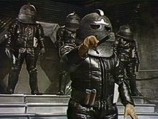 |
| The Sontarans Invade the Citadel |
|
 Rutans, Sontarans, K9 and Leela’s change in costume are the main things to look out for during this season. Rutans, Sontarans, K9 and Leela’s change in costume are the main things to look out for during this season.
 The first story, "Horror of Fang Rock", introduced the Rutans. This is the only televised Doctor Who story to feature the archenemies of the often seen Sontarans and has The Doctor and Leela arriving on Fang Rock, a small rocky island off the English coast in the first decade of the 20th Century. They soon discover that not all is well in a nearby lighthouse. Strange power losses, an unnatural fog, a number of deaths and sightings of the walking dead all make The Doctor suspect that something alien has arrived on the desolate rocky island. The Doctor eventually discovers the alien is a Rutan - a green blob like amphibious life form that has the ability to imitate a species buy using shape shifting technology. But this realisation comes too late as instead of locking the creature outside The Doctor has in fact locked the deadly Rutan inside the lighthouse with them. It becomes a fight for survival for The Doctor and Leela where the three lighthouse keepers and even the survivors from a shipwreck all become the Rutan’s victims. The first story, "Horror of Fang Rock", introduced the Rutans. This is the only televised Doctor Who story to feature the archenemies of the often seen Sontarans and has The Doctor and Leela arriving on Fang Rock, a small rocky island off the English coast in the first decade of the 20th Century. They soon discover that not all is well in a nearby lighthouse. Strange power losses, an unnatural fog, a number of deaths and sightings of the walking dead all make The Doctor suspect that something alien has arrived on the desolate rocky island. The Doctor eventually discovers the alien is a Rutan - a green blob like amphibious life form that has the ability to imitate a species buy using shape shifting technology. But this realisation comes too late as instead of locking the creature outside The Doctor has in fact locked the deadly Rutan inside the lighthouse with them. It becomes a fight for survival for The Doctor and Leela where the three lighthouse keepers and even the survivors from a shipwreck all become the Rutan’s victims.
 Even though "Horror of Fang Rock" mentions the Sontarans it is not until the final story, "The Invasion of Time", that they make an appearance - their third time in the show. This story which is primarily based on Gallifrey has the very heart of Time Lord civilisation turned upside down by The Doctor who is behaving very erratically which results in not one but two invasion attempts. The first is by the Vardans who think they are using The Doctor to gain control over the Time Lords. When in fact it is The Doctor tricking the Vardans into revealing themselves fully so he can trap their home planet in a time loop. However, in lowering the Time Lord’s defences so as to lure the Vardans into his trap, The Doctor inadvertently allows the Sontarans to carry out their own invasion attempt. This story contains some interesting and unusual scenes within The Doctor’s TARDIS – an area that has not been seen much since the 1964 First Doctor story "The Edge of Destruction" – due to the majority of the final two episodes of this story comprising a chase within the TARDIS’s many rooms and corridors. Even though "Horror of Fang Rock" mentions the Sontarans it is not until the final story, "The Invasion of Time", that they make an appearance - their third time in the show. This story which is primarily based on Gallifrey has the very heart of Time Lord civilisation turned upside down by The Doctor who is behaving very erratically which results in not one but two invasion attempts. The first is by the Vardans who think they are using The Doctor to gain control over the Time Lords. When in fact it is The Doctor tricking the Vardans into revealing themselves fully so he can trap their home planet in a time loop. However, in lowering the Time Lord’s defences so as to lure the Vardans into his trap, The Doctor inadvertently allows the Sontarans to carry out their own invasion attempt. This story contains some interesting and unusual scenes within The Doctor’s TARDIS – an area that has not been seen much since the 1964 First Doctor story "The Edge of Destruction" – due to the majority of the final two episodes of this story comprising a chase within the TARDIS’s many rooms and corridors.
 K9’s introductory story, "The Invisible Enemy", has K9 assisting The Doctor and Leela defeating the Nucleus of The Swarm – who has taken over The Doctor’s mind. It is not until the very end of this story, after The Nucleus is defeated, that K9 joins The Doctor and Leela in the TARDIS and so becomes a companion. K9’s owner, Professor Marius, decides to give K9 to The Doctor as a parting gift. The Doctor is at first reluctant, but Leela is delighted at the new addition in the TARDIS. In the end it is K9 who decides for himself, by entering the TARDIS, and so beginning his very unique place in the show’s history. To capitalise on the more humorous aspects of the show as the TARDIS dematerialises, Professor Marius is heard to state: ‘I only hope he’s TARDIS trained’. K9’s introductory story, "The Invisible Enemy", has K9 assisting The Doctor and Leela defeating the Nucleus of The Swarm – who has taken over The Doctor’s mind. It is not until the very end of this story, after The Nucleus is defeated, that K9 joins The Doctor and Leela in the TARDIS and so becomes a companion. K9’s owner, Professor Marius, decides to give K9 to The Doctor as a parting gift. The Doctor is at first reluctant, but Leela is delighted at the new addition in the TARDIS. In the end it is K9 who decides for himself, by entering the TARDIS, and so beginning his very unique place in the show’s history. To capitalise on the more humorous aspects of the show as the TARDIS dematerialises, Professor Marius is heard to state: ‘I only hope he’s TARDIS trained’.
 Due to the order in which most of the stories in this season were recorded being different to the order they were broadcast resulted a glaring continuity error in relation to Leela’s attire. The third story of this season, "Image of the Fendahl", marked the first appearance of a new version of Leela’s famous leather outfit. Lighter in colour than her previous savage attire it was made as a dress rather than being a leotard. It was also designed to make Louise Jameson look more sexier. However, in the very next story, "The Sun Makers", Leela is once more back in her original darker outfit ("The Sun Makers" having been recorded before "Image of the Fendahl"). For those who preferred her new more sexier look did not have to worry as the new version came back for Leela’s final two stories. Confused? Well The Doctor must have been as his scarf also alternated between a new version and the original in the same stories. Due to the order in which most of the stories in this season were recorded being different to the order they were broadcast resulted a glaring continuity error in relation to Leela’s attire. The third story of this season, "Image of the Fendahl", marked the first appearance of a new version of Leela’s famous leather outfit. Lighter in colour than her previous savage attire it was made as a dress rather than being a leotard. It was also designed to make Louise Jameson look more sexier. However, in the very next story, "The Sun Makers", Leela is once more back in her original darker outfit ("The Sun Makers" having been recorded before "Image of the Fendahl"). For those who preferred her new more sexier look did not have to worry as the new version came back for Leela’s final two stories. Confused? Well The Doctor must have been as his scarf also alternated between a new version and the original in the same stories.
|
|
|
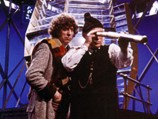 |
| The Doctor and Reuben |
|
 As already mentioned this season started and ended with the highly regarded stories "Horror of Fang Rock" and "The Invasion of Time" respectively. While it was the four stories in between, and in particular "Underworld", that were the low points. As already mentioned this season started and ended with the highly regarded stories "Horror of Fang Rock" and "The Invasion of Time" respectively. While it was the four stories in between, and in particular "Underworld", that were the low points.
 After the hugely successful Season Sixteen this whole season is tarnished by the loss of the horror and violence aspects that had been the trade marks of the Philip Hinchcliffe/Robert Holmes era and the attempts by Graham Williams to turn Doctor Who back into more of a family show by introducing more humour – not that this was Graham Williams’ fault. Over the years the show had taken a severe battering from Mary Whitehouse and so would take some time to recover. After the hugely successful Season Sixteen this whole season is tarnished by the loss of the horror and violence aspects that had been the trade marks of the Philip Hinchcliffe/Robert Holmes era and the attempts by Graham Williams to turn Doctor Who back into more of a family show by introducing more humour – not that this was Graham Williams’ fault. Over the years the show had taken a severe battering from Mary Whitehouse and so would take some time to recover.
 Even though "Horror of Fang Rock" was produced by Graham Williams it is very much influenced by Philip Hinchcliffe and Robert Holmes and it is because of this that it is seen by many fans as a great story – despite it not being filmed on an actual lighthouse the sets are so well constructed that one is lead to believe that it had been filmed on location. The only two things that let this story down are the unconvincing model shots, especially of the yacht crashing onto the rocks, and the scene at the very end where Leela is temporarily blinded by the destruction of the Rutan mothership – all to explain why Leela’s eyes change from brown to blue - so that Louise Jameson no longer had to wear contact lenses. Even though "Horror of Fang Rock" was produced by Graham Williams it is very much influenced by Philip Hinchcliffe and Robert Holmes and it is because of this that it is seen by many fans as a great story – despite it not being filmed on an actual lighthouse the sets are so well constructed that one is lead to believe that it had been filmed on location. The only two things that let this story down are the unconvincing model shots, especially of the yacht crashing onto the rocks, and the scene at the very end where Leela is temporarily blinded by the destruction of the Rutan mothership – all to explain why Leela’s eyes change from brown to blue - so that Louise Jameson no longer had to wear contact lenses.
 At the time of broadcast "The Invasion of Time" was the most popular story (with 10.5 million viewers) but over time, as shown in the Doctor Who Magazine Polls "Horror of Fang Rock" became this season’s fans favourite. As for the least favourite "Image of the Fendahl", received the fewest viewers (with 7.8 million viewers) but again over time, as shown in the Doctor Who Magazine Polls "Underworld" became this season’s fans least favourite. This story suffered due to huge budgetary problems caused by attempts to create a very elaborate set so as to complete with the recently shown blockbuster movie called Star Wars. The least said about "Underworld" the better… At the time of broadcast "The Invasion of Time" was the most popular story (with 10.5 million viewers) but over time, as shown in the Doctor Who Magazine Polls "Horror of Fang Rock" became this season’s fans favourite. As for the least favourite "Image of the Fendahl", received the fewest viewers (with 7.8 million viewers) but again over time, as shown in the Doctor Who Magazine Polls "Underworld" became this season’s fans least favourite. This story suffered due to huge budgetary problems caused by attempts to create a very elaborate set so as to complete with the recently shown blockbuster movie called Star Wars. The least said about "Underworld" the better…
|
|
|
|
|
| |
The Firsts:
 The first and only appearance of a Rutan - an archenemy of the Sontarans. (Horror of Fang Rock) The first and only appearance of a Rutan - an archenemy of the Sontarans. (Horror of Fang Rock)
 Graham Williams' first involvement in the show as Producer. (Horror of Fang Rock) Graham Williams' first involvement in the show as Producer. (Horror of Fang Rock)
 The introduction of new companion K9 voiced by John Leeson. (The Invisible Enemy) The introduction of new companion K9 voiced by John Leeson. (The Invisible Enemy)
 The first story in which the Radio Times credited the lead character as ‘The Doctor’ rather than ‘Doctor Who’. (Image of the Fendahl) The first story in which the Radio Times credited the lead character as ‘The Doctor’ rather than ‘Doctor Who’. (Image of the Fendahl)
 Anthony Read's first involvement in the show as Script Editor (all-be-it uncredited). (The Sun Makers) Anthony Read's first involvement in the show as Script Editor (all-be-it uncredited). (The Sun Makers)
 The first story to show regeneration being applied by non-Time Lords. (Underworld) The first story to show regeneration being applied by non-Time Lords. (Underworld)
 Anthony Read's first credited involvement in the show as Script Editor. (Underworld) Anthony Read's first credited involvement in the show as Script Editor. (Underworld)
|
| |
The Lasts (Subject to Future Stories):
| |
| Doctor Who CMS Magazine (In Vision) | Issue 30: Season 15 Overview - (Released: March 1991) | | Doctor Who Magazine - Episode Guide | Issue 152 - (Released: September 1989) | | Doctor Who Magazine - Article | Issue 290 - (Released: May 2000) | | Doctor Who Magazine - Countdown to 50 | Issue 444 - (Released: March 2012) |
|
|
| |
The Doctor and Companions| | 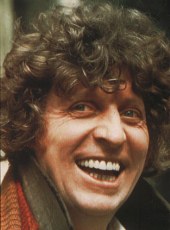 | | The Fourth Doctor |
|
| | | | |
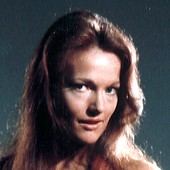 | | Leela |
| | 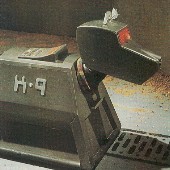 | | K9 Mk I |
| | | | |
|
On Release| | 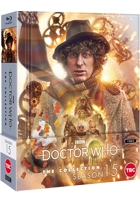 | | The Collection Season 15 Limited Edition Blu-Ray Cover |

VIDEO |
| | | | | |
Magazines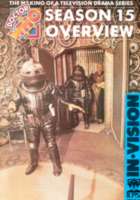 | | Doctor Who CMS Magazine (In Vision): Issue 30: Season 15 Overview |
| 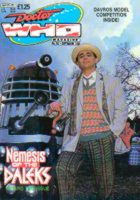 | | Doctor Who Magazine - Episode Guide: Issue 152 |
| 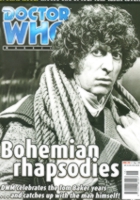 | | Doctor Who Magazine - Article: Issue 290 |
| 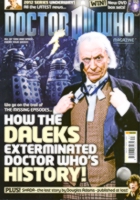 | | Doctor Who Magazine - Countdown to 50: Issue 444 |
| | | | |
|
|
|
| |
| |
|
| |
| |
|
| Doctor Who is the copyright of the British Broadcasting
Corporation. No infringements intended. This site is not endorsed by the BBC or
any representatives thereof. |
|